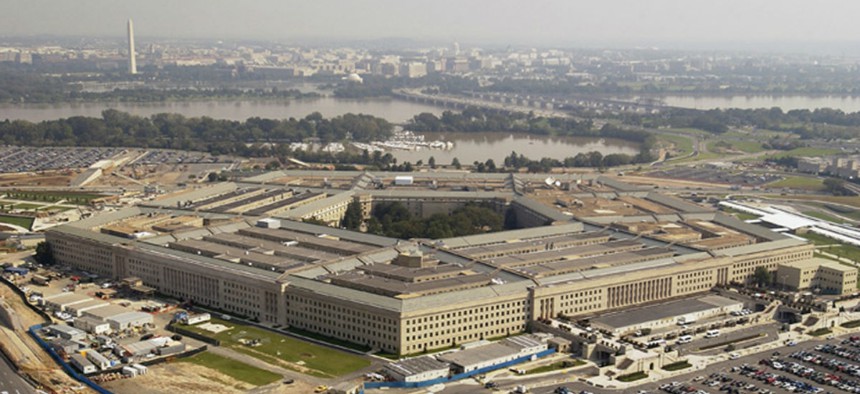Defense Contractors See End of Budget Decline
Pentagon awards rose by a surprising 7 percent in 2016, think tank says.
The Pentagon, as the government’s largest buyer of goods and services, is ending a seven-year drawdown of acquisition spending, according to a study released on Wednesday.
“The tide has definitely turned in the direction of contract spending,” wrote a team directed by Andrew Hunter of the Center for Strategic and International Studies.
Defense Department fiscal 2016 contract obligations increased by 7 percent over the previous year, “far higher than predicted,” said the analysis of the outlook for spending on research and development, defense acquisition reform and procurement performance-based data from the Federal Procurement Data System.
Significant boosts in spending commitments were recorded by the Missile Defense Agency, the Air Force and the Navy, “driven primarily by increased obligations for large procurement programs like the C-130J transport aircraft, the KC-45A tanker aircraft, and the Trident II missile program,” CSIS said. “Even the Army, which had declined far more steeply than DoD overall throughout the budget drawdown, was virtually stable between 2015 and 2016.”
Year-to-year trends in product contract obligations “are highly sensitive to the timing of large contracts for production of major weapons systems such as the F-35” joint strike fighter, the report said, “though with purchases of F-35s likely to accelerate in the near future, these large contracts may be a continuing source of stability within the DoD products contract portfolio.”
Research and development contracts “have borne a disproportionate share of cuts within the DoD contracting portfolio during the current budget drawdown,” it said. "The dimensions of those cuts, however, have not followed the expected path. Despite fears that early stage, seed corn R&D would be hit particularly hard, the data show that it has been relatively preserved compared to the overall declines in R&D.”
What’s more, the analysts said, despite the decline in contract obligations since 2009, “the composition of the defense industrial base, as measured by size of vendor, has been relatively stable.” In the private sector, “Medium vendors have accounted for between 20 percent and 22 percent of overall DoD contract obligations in every year during the period, while large vendors have accounted for between 30 percent and 34 percent throughout.”
The Big 5 defense vendors—Lockheed Martin, Boeing, Northrop Grumman, General Dynamics and Raytheon--“have seen similar stability, accounting for between 27 percent and 31 percent of DoD contract obligations in each year since 2009,” CSIS said.
Small vendors, by contrast, have actually increased their share in the last two years, from 16 percent from 2009–2013 to 19 percent in 2014 and 2015. “The bulk of this growth in share was a result of an increase in small business contract obligations…. after the tremendous decline in 2013 in the wake of sequestration,” the report said. The overall data “can be seen as a victory for policies that promote small business participation” in spite of the pressures of the budget drawdown.
“Going forward, a key question is whether the Defense Innovation Initiative, and its components, survive the transition to the new Trump administration,” the analysts wrote, expressing uncertainty of the fate of contracting in Trump’s proposal to raise defense spending by $54 billion. “Throughout the campaign, the president-elect and his surrogates made rebuilding the military a focus of the campaign, but made little reference to military innovation in particular.”
The retention of Obama administration holdover Bob Work as deputy Defense secretary shows that such innovation might remain a priority, the CSIS analysts wrote.




